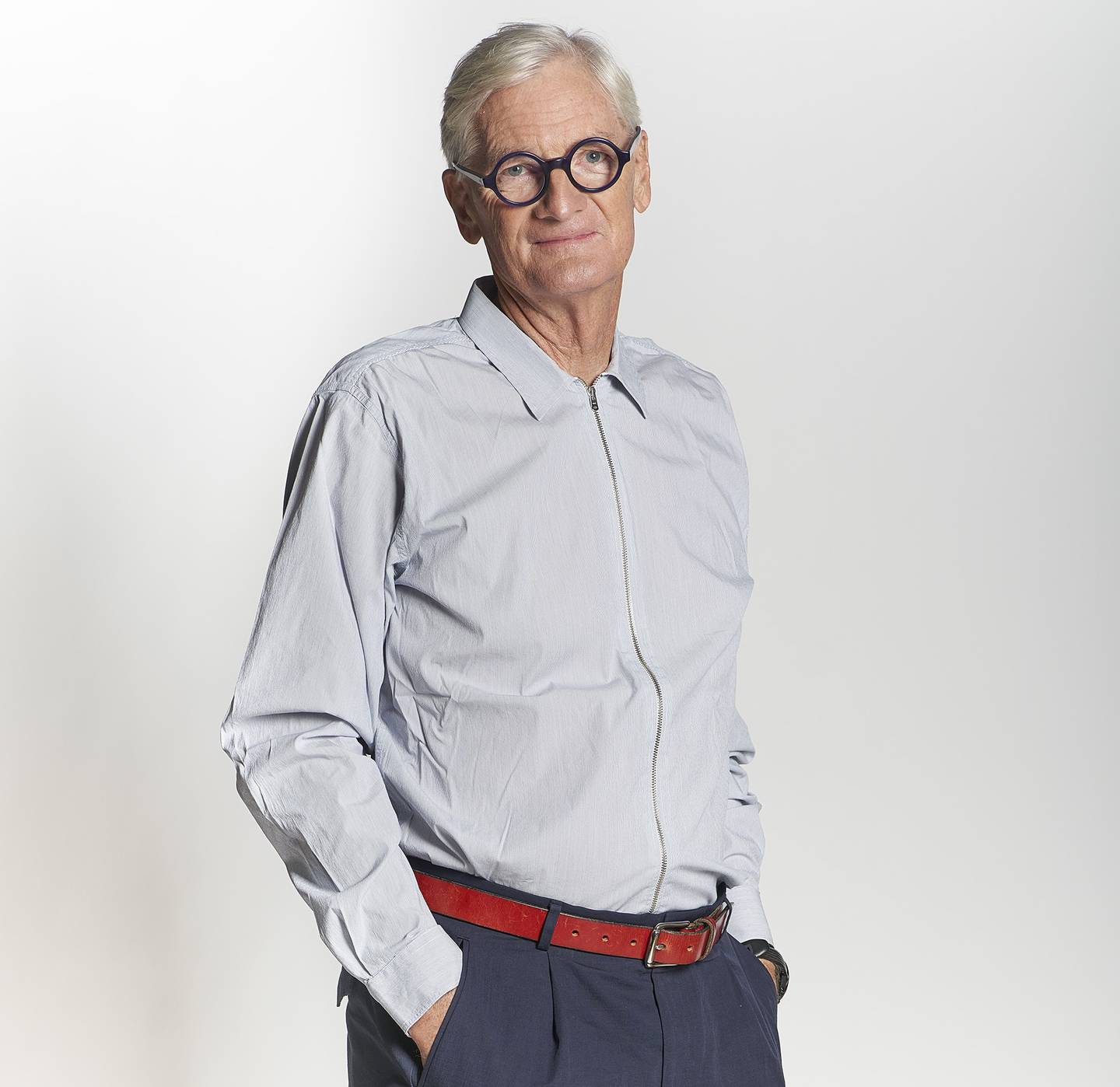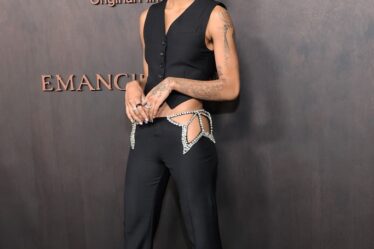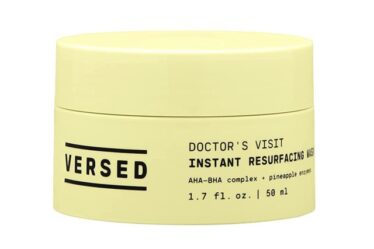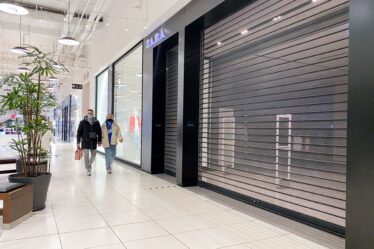
Hours before James Dyson went on stage to announce the latest Dyson beauty innovation in front of roughly 200 people, he was giving a TikTok-like tutorial in a dimmed Chelsea event space in New York.
Dressed in a casual black bomber jacket with a dark henley and jeans, Dyson, 76, was first rough drying his hair with the company’s new Airstrait, a wet-to-dry straightener, before flipping the tool over and flat ironing the hair.
“This is how you create root lift,” he said while raising the Airstrait above his head. James Dyson is known to test out all of his products, and beauty tools are no exception.
The Airstrait is the fourth beauty launch since Dyson, the company, dove head first into the category in 2016 with the Supersonic hair dryer. Though the brand name has been known globally for over 30 years thanks to hand dryers in nearly every airport and its popular vacuums, its entry into beauty has brought the company unexpected new attention. The hashtag #dyson has over 4.1 billion views, and a slew of competitors, including fellow vacuum makers like Shark, aim to capitalise on Dyson’s success.
It also put Dyson on the map with teenagers, who are re-educating their parents and grandparents about a brand previous generations primarily associated with bathrooms and household chores.
“Fourteen and 16-year-olds are not buying vacuums, but they are buying our beauty tools. Their parents don’t have time to go through social media like that, but they are showing them,” Dyson said. “It’s a completely new audience we hadn’t touched.”
Gen-Z has catapulted the brand on TikTok, helping engineer the rise of curtain bangs and fluffy blowouts seen on the likes of influencers such as Matilda Djerf. It’s also spawned, copycats. According to Spate research for the month of April, Google searches for “dupe Dyson” and “Dyson dupe” are up 9.1 percent year-over-year.
Last year, the company said its revenue grew 7 percent to £6.5 billion ($8.1 billion), with earnings before interest, taxes, depreciation and amortisation of £1.3 billion ($1.6 billion). Its hair care is the company’s fastest-growing segment in the US, Dyson said. The company is based in Singapore after moving from the UK in 2019, a decision that drew criticism at the time, as James Dyson was a vocal proponent of Brexit.
“We want to be in beauty care in a big way; we’re enjoying it,” he said. “The lovely thing about beauty is that people really care about it; not everyone cares about vacuums.”
The Cult of Dyson
The Airstrait, a multi styling hair dryer and straightener, promises no heat damage and time back. Precision air jets pump air through tension bars (that look like hot plates but are not) to dry and smooth the hair.
Wet to dry straighteners are not new — Ghd, Conair and BabyBliss all have their versions. But neither were blow dryers or curl brushes. Dyson’s pitch is that the Airstrait sits in a class of its own.
The sometimes eye-watering prices for Dyson tools help drive that message home. Beauty brands like Harry Josh have tried to offer a luxury hair styling experience (its entry hair dryer is $250). Dyson gave beauty shoppers permission to spend well over that. The Supersonic sells for $429.
At nearly $600, the Airwrap, a hair drying-curling blockbuster, promised users salon-worthy blowouts with minimal skill. The Corale, a hair straightener launched in 2020, sells for $499; as does the new Airstrait.
The premium pricing has proven a selling point rather than a deterrent. The segment continues to grow. Beauty accounts for 30 percent of sales in the US.
Yarden Horowitz, co-founder of Spate said there are some signs of prices sensitively in this market as searches for the brand are down nearly 12 percent year-on-year. Dyson also has to contend with dupes: cheaper products that promise similar results (with varying degrees of accuracy).
Betting The House
In October, Dyson announced that the company was investing £500 million ($625 million) in beauty development and innovation; the company said its capital expenditures rose 63 percent last year, to £463 million ($579 million).
The Airstrait is the first of 20 products expected to be unveiled over the next four years. James Dyson did not rule out that some of those items could fall beyond the tool category, and said introducing AI into more items will be a priority (one potential use: enabling tools to turn themselves off when they are put down).
The latest device also pulls from the brand’s previous technologies: it shares the same quarter-sized motor found in the Supersonic and Airwrap and uses a filter, most commonly seen in Dyson vacuums. It is also the first Dyson beauty tool to feature an LED screen, like the company’s humidifiers and fans, and reminds users which state they are in (wet or dry) or what temperature they are using.
It’s hard to imagine which beauty shopper might need or could afford all four of Dyson’s tools (especially since the Airwrap and Airstait are multi stylers), much less 19 more of them. But James Dyson doesn’t see desire for his beauty line abating.
“It’s a bit like being a craftsman. He has several tools. He doesn’t just have a hammer, he has a screwdriver,” he said.



